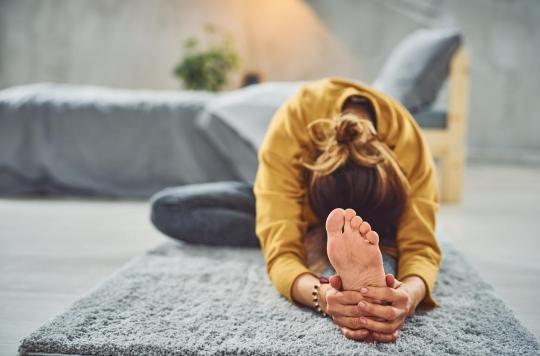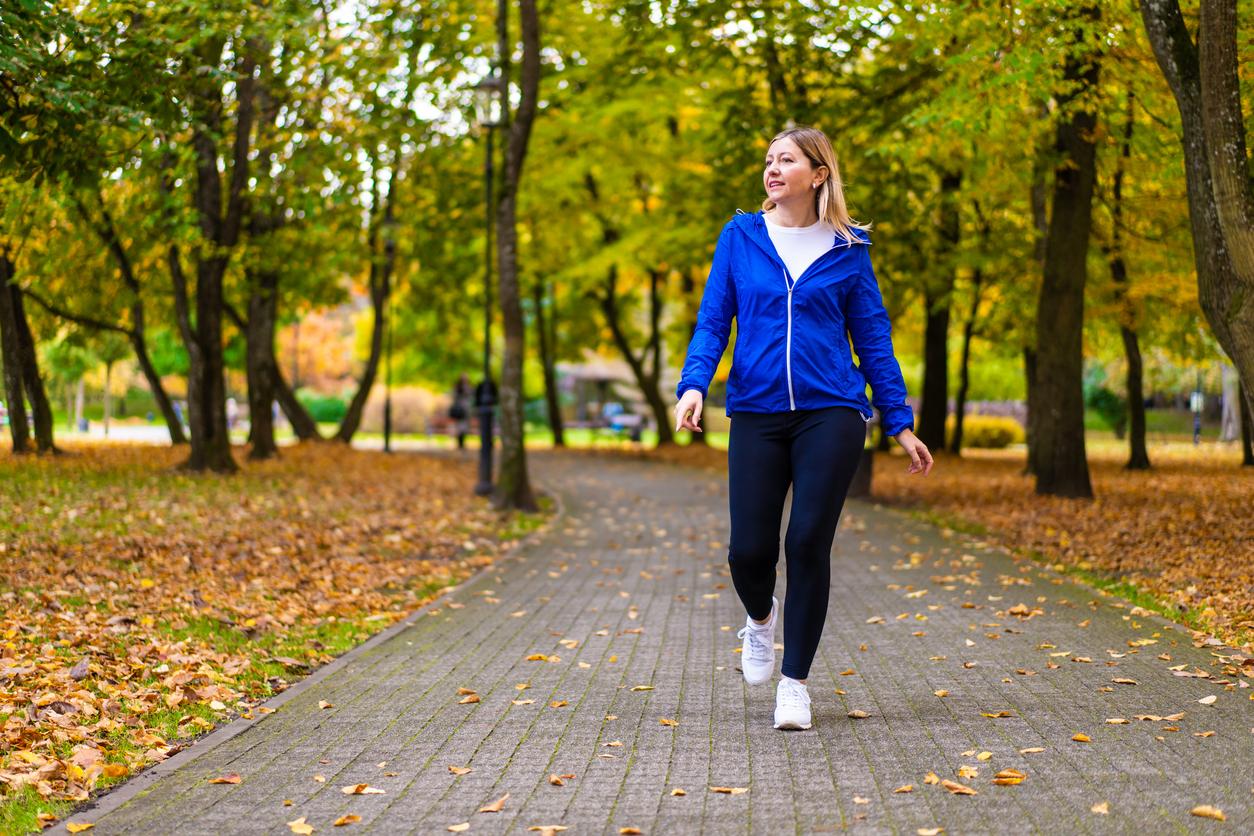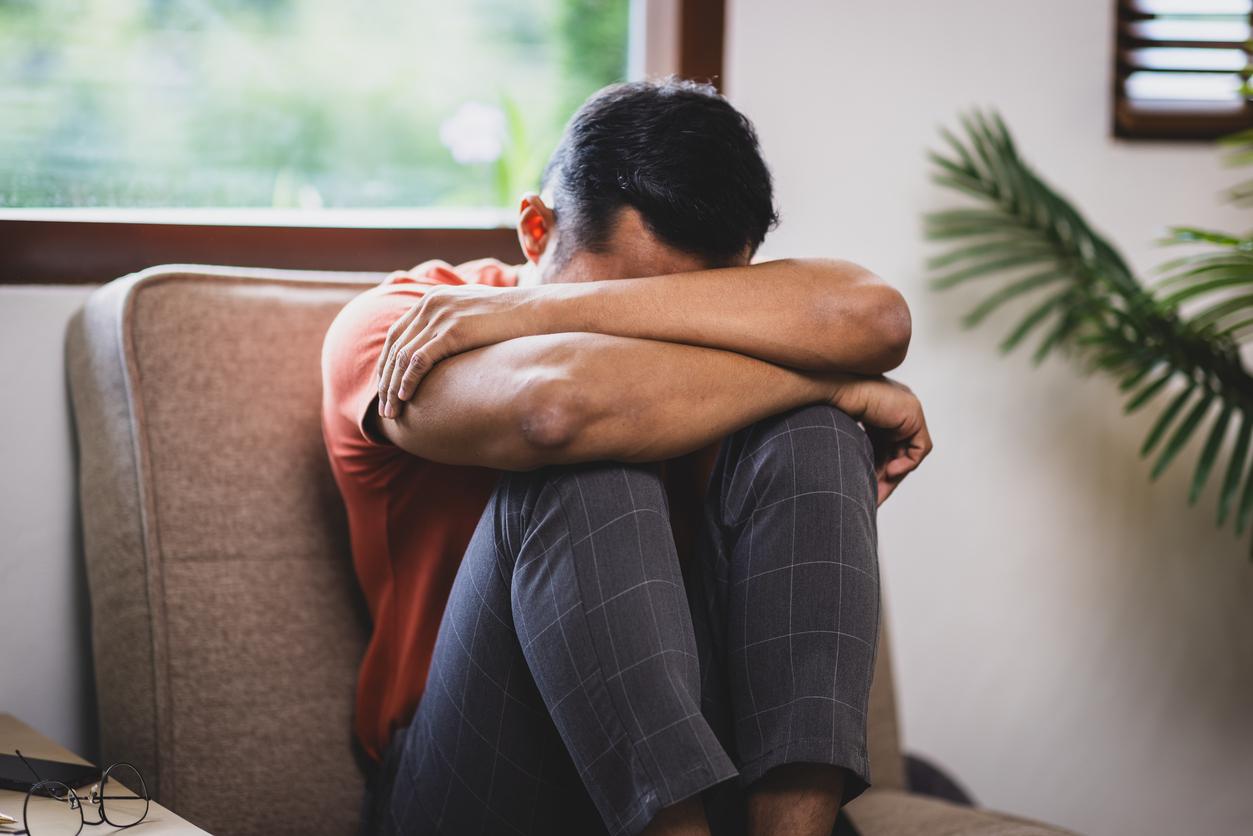In addition to its repercussions on the mind that we know, depression is often accompanied by physical pain. The book “I relieve my depression thanks to yoga”, by Mélanie Veyrond, offers three complete sequences to soothe a crisis, develop positive feelings and fight against symptoms (extract 1/2).

Depression is a contemporary illness, correlated with a way of life that no longer respects the rhythms of nature and therefore of man. Loss of vital momentum and self-esteem, great sadness, energy in the socks, lack of interest, emotionality… The body is exhausted. Depression can be dened as an “energy void”. There are as many “depressions” as there are people who suffer from it. Because although depression meets specific criteria, there is not “one” uniform depression, but a multitude of variations of this disorder. However, we can identify characteristic elements or clinical signs of depression. These signs are five in number and correspond to five different functions of the brain: envy, pleasure, concentration, emotional control and the ability to synchronize in space-time.
The role of neuromediators
To understand this very particular state, it is necessary to evoke the role of neurotransmitters, these chemical substances produced by the neurons and ensuring the good conduction of the nervous inux, therefore the communication between neurons. During a depressive state, the neuromediators are altered, thus disrupting the five functions of the brain that we have just mentioned. Each clinical or characteristic sign of depression is more or less important: it depends on the neuromediators, which can be neutralized due to stress or produced in insufficient quantity due to lack of nutritional intake. Understanding the mechanisms of depression from neuromediators allows to set up a very concrete approach and to offer an adapted response in yogatherapy. The postures and meditations chosen will thus be able to act on the different neuromediators according to the way in which they are practiced.
For each neurotransmitter are indicated the disorders that occur in case of dysfunction.
•Dopamine is responsible for desire, for envy. It can be compared to the starter of a car. When everything is going well, you wake up wanting to have a great day and you have no trouble getting out of bed.
•Noradrenaline, responsible for pleasure, joy, can be compared to the gasoline of the engine. Dopamine and norepinephrine give the energy to move forward and act. When these neurotransmitters malfunction, you feel exhausted, drained, the slightest effort seems like a mountain, characteristic signs of depression.
•Acetylcholine is responsible for the proper functioning of concentration and memory. It can be compared to the clutch of the vehicle. When this neuromediator malfunctions, you can no longer concentrate, read a book, for example. You can have thoughts on loop with ruminations, source of anxiety, which will exhaust you. Because these thoughts that turn in a loop are great consumers of energy for the brain.
•Serotonin, provides emotional control. It can be compared to the brake, it regulates our emotions, helps to soothe, it is the neuromediator of well-being in a way. When it malfunctions, you can be very emotional, irritated, and irritable.
•Melatonin is the neurotransmitter responsible for our good sleep. It can be compared to our ability to turn off the engine. When it malfunctions, there is a desynchronization of rhythms, aggravated by difculties in social relations, with a withdrawal into oneself. Proven depression leads to a dysfunction of all neuromediators, which disrupts the body’s regulatory capacities (homeostasis) often creating other disorders, such as osteo-articular pain, digestive problems, headaches, a disturbance of the hormonal system, weight problems…
Yoga can be invaluable for people suffering from depression: by helping them to find the sensations in their body, to regain control of their health and to reconnect with the feeling of pleasure, it revives the functioning of the neuromediators. By restoring movement to the body, yoga restores movement to life. Several studies have shown the effectiveness of yoga in the management of depression, but also in the prevention of relapses. Indeed, yoga brings real well-being to people suffering from this disease, because it helps to reduce stress and anxiety, to develop self-confidence, to regain the freedom to live in the present moment.
Act on the body and the mind
Depression is a disease that affects both the head and the body. In addition to devaluing thoughts and mental ruminations, it results in painful bodily sensations. The practice of therapeutic yoga helps to fight against these symptoms because it allows you to act as much on the body, by developing positive and pleasant sensations, as on the spirit and the mind, by inducing positive thoughts. Yoga is much more than a simple physical exercise, it helps us to know ourselves better, both mentally and bodily, to explore the depths of our being and to find harmony between mind and body.
Once we understand depression from a central nervous system perspective, with neurotransmitters, we can put a program in place. In therapeutic yoga, different tools are used: postures (asanas), breathing and the work of breath (pranayama), meditations, relaxations and visualizations. The yoga therapist will have you fill out a questionnaire to highlight which neuromediator is dysfunctional; then, he will take stock of your diet and lifestyle and can recommend food supplements to restore the balance your body needs.
Closing postures, meditations and relaxations reinforce the secretion of serotonin and melatonin. You will then have an easier time managing emotions, calming yourself down and getting a good night’s sleep. For this, I have chosen to include in this book yin yoga postures, performed on the ground, where you will not have to make any muscular effort, it is rather a question of letting yourself go, therefore of letting go of control by somehow. These postures are maintained between 3 and 5 minutes. You will also find restorative yoga postures, held for 20 minutes, which, as the name of this type of yoga suggests, allow the body to restore itself in depth.
The standing postures, which are dynamic and opening asanas, aim to strengthen the secretion of dopamine and norepinephrine which, in turn, will enhance feelings of pleasure and joy, as well as self-esteem. Meditations and relaxations, on the other hand, act directly on looping thoughts and will help you to step back and not identify with these pessimistic thoughts.
We are multidimensional individuals, we are not just thoughts or symptoms but rather the result of their interaction. The practice of yoga helps us find harmony between our ideas, our behaviors, our moods and our body system. Work our body to balance our being… Thanks to this practice, we can reconnect with the feeling of peace, security and deep joy, sat chit ananda as the yogis call it. Yoga is an art that allows us to transform ourselves in depth.
To learn more, read “I relieve my depression thanks to yoga”, by Mélanie Veyrond, coll. Yoga & Health – coed. Living Earth & Yoga Spirit. Available en bookstores, organic stores and www.terrevivante.org.

.















